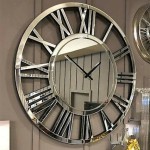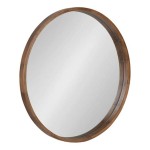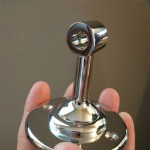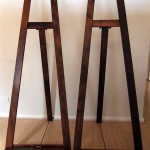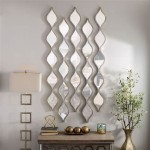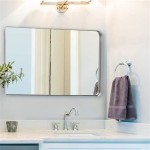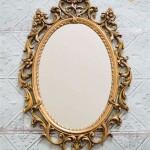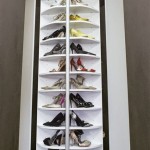What To Use To Hang a Heavy Mirror
Hanging a heavy mirror requires careful consideration of the wall type and the mirror's weight to ensure secure and safe installation. Choosing the correct hanging hardware is crucial to prevent accidents and damage. This article explores various options for hanging heavy mirrors, outlining the advantages and disadvantages of each.
Heavy-Duty Picture Hooks: These hooks are designed for heavier items and often come with multiple nails for added support. They are suitable for drywall and plaster walls and are a good option for moderately heavy mirrors. However, they may not be suitable for extremely heavy mirrors or brittle walls.
D-Rings and Wire: This is a traditional method for hanging pictures and mirrors. D-rings are attached to the back of the mirror, and wire is strung between them. This wire is then hung on a hook or nail in the wall. This method distributes the weight evenly, but requires accurate placement of the D-rings and proper tensioning of the wire. It's essential to use heavy-duty wire rated for the mirror's weight.
J-Hooks: J-hooks are designed to hook directly onto screws or nails driven into the wall. They offer good support and are suitable for various wall types. The weight capacity varies depending on the size and material of the J-hook. Selecting a J-hook rated for the mirror's weight is crucial for secure hanging.
French Cleats: A French cleat system consists of two interlocking pieces of wood, one attached to the wall and the other to the back of the mirror. This method is exceptionally strong and suitable for very heavy mirrors. It provides a flush mount against the wall, offering a clean, professional look. However, installing a French cleat requires more precise measurements and installation than other methods.
Mirror Mounting Clips: These clips are designed specifically for hanging mirrors and offer a secure grip. They are typically installed along the bottom and sides of the mirror and provide additional support. Mirror mounting clips are often used in conjunction with other hanging methods, such as D-rings and wire or J-hooks, for added stability, particularly for larger or heavier mirrors.
Toggle Bolts: Toggle bolts are ideal for hanging heavy objects on hollow walls, such as drywall. When inserted into a drilled hole, the toggle bolt expands behind the wall, providing a secure anchor. They offer significantly greater holding power than standard screws or nails in these wall types.
Wall Anchors: Various types of wall anchors are available, including plastic expansion anchors, molly bolts, and sleeve anchors. These are inserted into drilled holes and expand or grip the inside of the wall to provide a secure base for screws. The appropriate anchor type depends on the wall material and the weight of the mirror.
Adhesive Hangers: While some adhesive hangers are marketed for heavy items, they are generally not recommended for large, heavy mirrors. Over time, adhesive can weaken, especially in humid environments, potentially leading to the mirror falling. Adhesive hangers should be used with caution and only for smaller, lighter mirrors in appropriate environments.
Understanding Wall Types: Before choosing hanging hardware, it's essential to identify the wall type. Drywall requires different hardware than plaster or masonry. Using the wrong hardware can result in insecure mounting or damage to the wall.
Weight Considerations: Accurately determining the mirror’s weight is crucial for selecting appropriate hanging hardware. Use a bathroom scale or consult the manufacturer's specifications for the mirror's weight. Always choose hardware rated for a weight exceeding the actual weight of the mirror for a safety margin.
Stud Finding: Whenever possible, hanging heavy objects on wall studs offers the most secure mounting. Use a stud finder to locate studs and ensure screws are driven directly into them. This provides a solid anchor and reduces the risk of the mirror falling.
Multiple Hanging Points: For very large or heavy mirrors, consider using multiple hanging points to distribute the weight more evenly. This can involve using multiple sets of D-rings and wire, multiple J-hooks, or a combination of methods.
Professional Installation: For extremely heavy or valuable mirrors, especially those with complex installation requirements, professional installation is recommended. Professional installers have the expertise and tools to ensure secure and safe mounting, minimizing the risk of damage to the mirror or the wall.
Safety Precautions: When hanging a heavy mirror, always prioritize safety. Wear appropriate safety glasses and gloves to protect against potential injury. If working on a ladder, ensure it is stable and positioned correctly. Consider having a helper assist with lifting and positioning the mirror during installation.
Pre-Installation Checks: Before finalizing the installation, perform a thorough check to ensure the mirror is hanging level and secure. Gently tug on the mirror to confirm it is firmly attached to the wall. Inspect the hanging hardware for any signs of stress or damage.

How To Hang A Heavy Mirror C R F T

How To Hang A Large Or Heavy Mirror

How To Hang A Heavy Mirror With Pictures Wikihow

How To Hang A Heavy Mirror

How To Hang A Heavy Mirror With French Cleat

How To Hang A Heavy Mirror Or Picture True Value

How To Hang A Heavy Mirror C R F T

How To Hang Something Heavy Like A Pro Calling It Home

How To Hang A Heavy Mirror On Brick Fireplace Drill Into Dans Le Lakehouse

How To Hang A Heavy Mirror Securely Bob Vila

